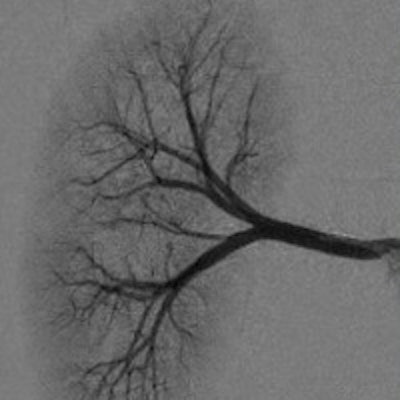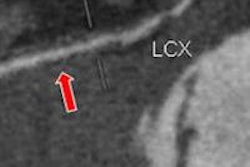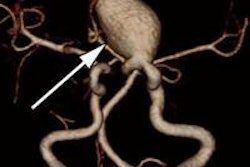
In a session on Sunday at the Society of Interventional Radiology (SIR) conference in Atlanta, researchers from Cincinnati Children's Hospital Medical Center will demonstrate protocols they developed that dramatically cut radiation dose for pediatric digital subtraction angiography (DSA) procedures.
The researchers were able to reduce dose by as much as 95% over conventional DSA while maintaining diagnostic image quality, according to Dr. John Racadio, division chief of pediatric interventional radiology at Cincinnati Children's. The protocols are already being used at the facility and may be rolled out more broadly as part of a commercial product.
"These protocols that we have developed, we have implemented in our clinical lab," Racadio said. "They've decreased dose in all our pediatric patients."
Radiation-intensive technique
DSA is one of the more radiation-intensive techniques used in interventional radiology, but it is a key tool for visualizing blood vessels in areas dominated by bone or dense soft tissue. Vendors are developing a variety of methods for reducing DSA radiation dose, one of which is the AlluraClarity technology from Philips Healthcare.
First launched in the U.S. in 2013, AlluraClarity has already been shown to reduce dose in adult patients by up to 75% over conventional DSA, according to the vendor. But AlluraClarity hasn't yet been optimized for pediatric applications, where dose reduction is even more important. So the group from Cincinnati Children's decided to give it a try.
They attacked the problem by looking for technical parameters that could be changed on a commercially available angiography system outfitted with the AlluraClarity technology (Allura Xper FD20, Philips). The changes included the following:
- Adjusting the thickness of the copper filter to optimal levels, which can reduce dose while preserving image quality.
- Optimizing the pulse rate of the x-ray beam. With today's technology, x-ray beams are rapidly turned on and off rather than operating continuously. Slowing down the rate of pulsing, such as to 7.5 frames per second (fps) from the standard 15 fps, can reduce dose.
- Using a smaller focal spot for children, who have smaller anatomy than adults. This produces sharper images with fewer x-ray photons required.
Different combinations of the parameters were used to create three different pediatric protocols that reduced dose by 80%, 90%, and 95%, compared with standard DSA protocols. The protocols were described in a paper published in the American Journal of Roentgenology in October 2014 (Vol. 203:4, pp. 904-908), in which the techniques were tested in animals.
 Renal angiogram in animal studies shows change in image quality with different dose-reduction protocols. Image courtesy of Dr. John Racadio.
Renal angiogram in animal studies shows change in image quality with different dose-reduction protocols. Image courtesy of Dr. John Racadio.In the SIR paper to be presented on Sunday afternoon, Dr. Timothy Singewald of Cincinnati Children's will discuss the next step of the research: The group analyzed the level of radiation dose delivered with each version, rendered in mGy per DSA frame, and then tested whether each protocol produced diagnostic-quality images by having interventional radiology attending physicians review images and rate each DSA run as diagnostic or nondiagnostic.
The techniques were tested in a small population of 14 patients and 96 DSA runs. Philips' existing AlluraClarity technique with its 75% dose reduction over conventional DSA was used as a reference point.
The dose reduction for each of the techniques is shown in the table below, as classified by magnitude of dose reduction measured at entrance dose (air kerma).
| Radiation dose by dose-reduction technique | ||||
| 75% reduction | 80% reduction | 90% reduction | 95% reduction | |
| Mean patient dose | 0.77 mGy/frame | 0.45 mGy/frame | 0.22 mGy/frame | 0.08 mGy/frame |
| No. of diagnostic DSA runs/total runs | 25/26 | 12/13 | 39/40 | 17/17 |
There was a statistically significant difference in radiation dose between all four techniques (p < 0.01), but no statistically significant difference in diagnostic quality (p = 0.66).
The researchers have already begun using the protocol whenever pediatric DSA studies are required at Cincinnati Children's. Philips could also roll the protocols out as a commercial product as part of an upgrade for AlluraClarity.
The work points out the constant tension between reducing dose and maintaining image quality. For example, lower frame rates can produce images that have a jerky quality similar to an old-time movie, according to Keith Strauss, a clinical imaging physicist at Cincinnati Children's.
"You can get too much of a good thing," Strauss said. "You want to make sure you don't push a technique beyond the limit where it affects image quality."



















